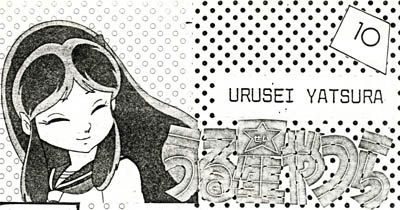
Once upon a time there were people who loved Japanese comics SO MUCH that they would, on their own recognizance, take the original Japanese comics and translate them into English! All by themselves! And then they’d distribute these translations to the world at large, unconcerned with things like “copyright” or “trademark” or “intellectual property”. Of course this whole business has generated a lot of press lately because of the amazing ability of the vast computer networks that surround us all to transmit and distribute information faster than human minds can even conceive. And to think the doomsayers and pessimists always assumed the assault on mankind would begin with killer robots and death rays!
This may astonish today's computer-enabled youth, but scanlations existed long before cheap terabyte drives and broadband connections. In fact these stone-age “scanlations” didn’t need computers at all!
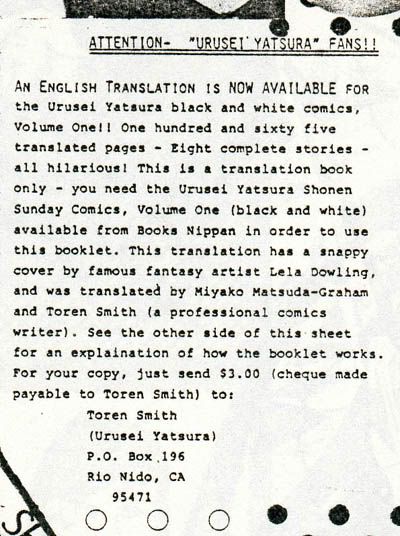
This advertisement appeared in the BOOKS NIPPAN ANIMATION FAN CLUB NEWSLETTER (vol 4) from sometime in 1985. Is this the first attempt at wide distribution of a possibly unauthorized translation of Japanese manga? Could be. Translator and Gunbuster star Toren Smith was always ahead of the curve; he went on to build a career out of authorized, licensed Japanese comics through his Studio Proteus organization.
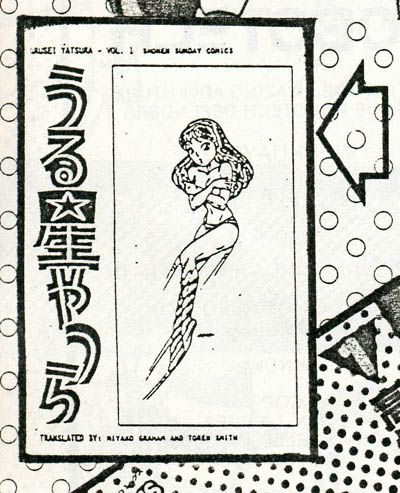
(alternate Art Frahm cover available upon request)
The prototype scanlation seen here appeared as a companion booklet to the official Shogakukan release of Urusei Yatsura volume 1. You’d simply hold the UY manga – purchased through Books Nippan, of course - in one hand and the translation booklet in the other, and through a complicated mental process not fully understood by our top scientists, the meaning of the Urusei Yatsura story will become clear to you.
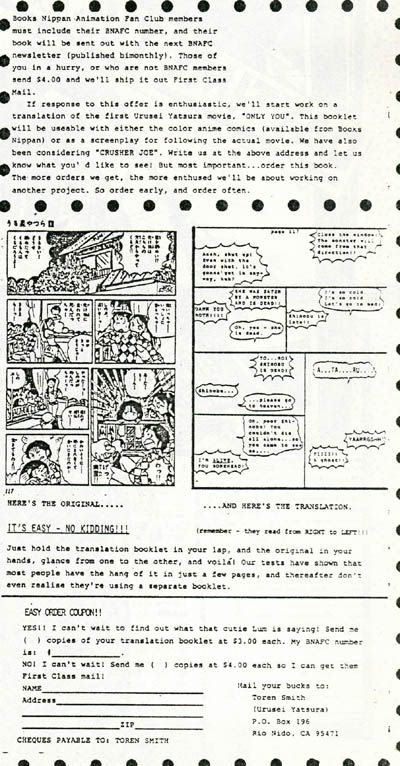
One wonders just how popular this particular marketing plan was; Viz would begin publishing officially-licensed Urusei Yatsura in English in a few years. Shogakukan had already released several volumes of Urusei Yatsura in a dual-language format as an English-language teaching aid. Or as a Japanese-language teaching aid, these things swing both ways (these handsome sepia-tone tankubon were also produced for other series, including Sasuga No Sarutobi).
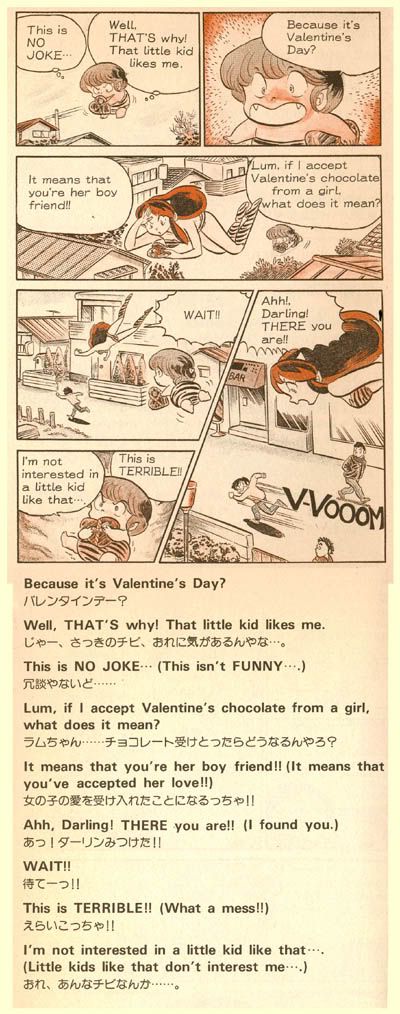
Rather than a strictly commercial product, these 80s UY scanlations were a more upscale form of the ‘translation packets’ being distributed by various fan organizations throughout the 80s. Anything that would fit onto photocopier glass was Xeroxed like crazy – song translations, possibly inaccurate episode guides, character sheets, articles from trade publications – if it was about anime it got distributed, copyright and original intent of the author be damned. It is with this blithe disregard for intellectual property that anime fandom first established itself upon our shores, a mark of Cain that all must bear in shame and/or glory. Of course, the way I figure it, anime fans spent 20 years producing and distributing pro bono advertising for Bandai, so it all evens out in the end.
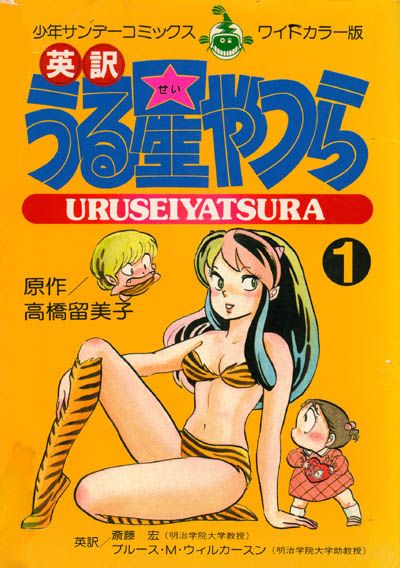
(I can't wait to find out what that cutie Lum is saying!)



